The pretty, coastal town of Matsushima is one of the nihon sankei, aka the three most scenic places in Japan.
The others are the island of Miyajima, near Hiroshima, and Amanohashidate, a pine-tree topped sandbank in Miyazu Bay.
Nestled on the coast in the centre of Miyagi prefecture, the town’s beautiful bay is dotted with more than 250 small islands.
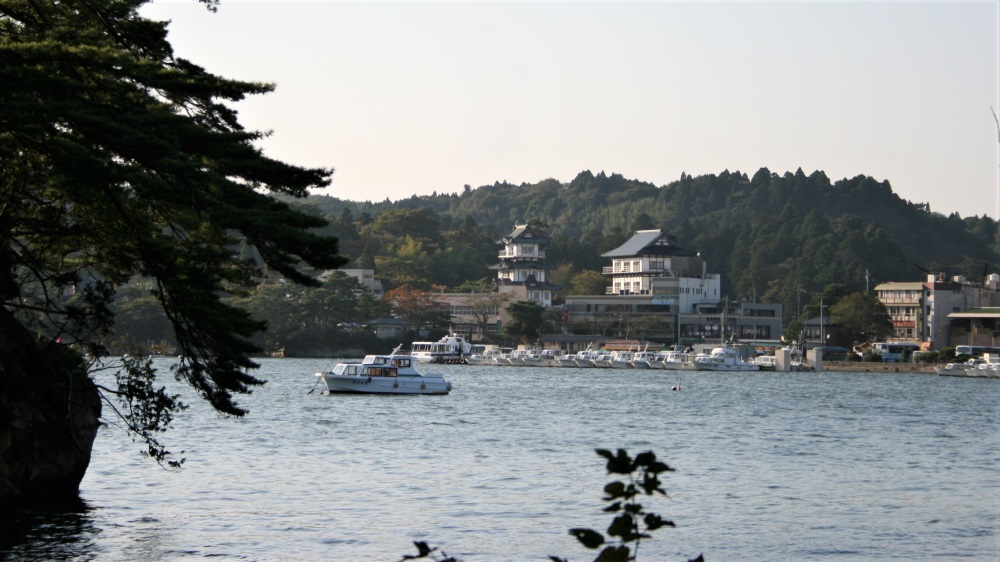
Browsing the shops and cafés that line the shore, it’s hard to imagine that five years ago this peaceful, picture-perfect spot witnessed one of the worst natural disasters in recent memory – the massive 9.0 earthquake and subsequent tsunami that struck off Japan’s north-east coast on 11 March 2011.

Matsushima was spared the full devastating effects of the enormous tsunami thanks to the islands in the bay, which acted as a buffer against the huge waves.
Nevertheless, the wall of water that hit the town was immense.
I visited one shop on the shore front that had a sign in its window showing the water level, which reached my shoulders.
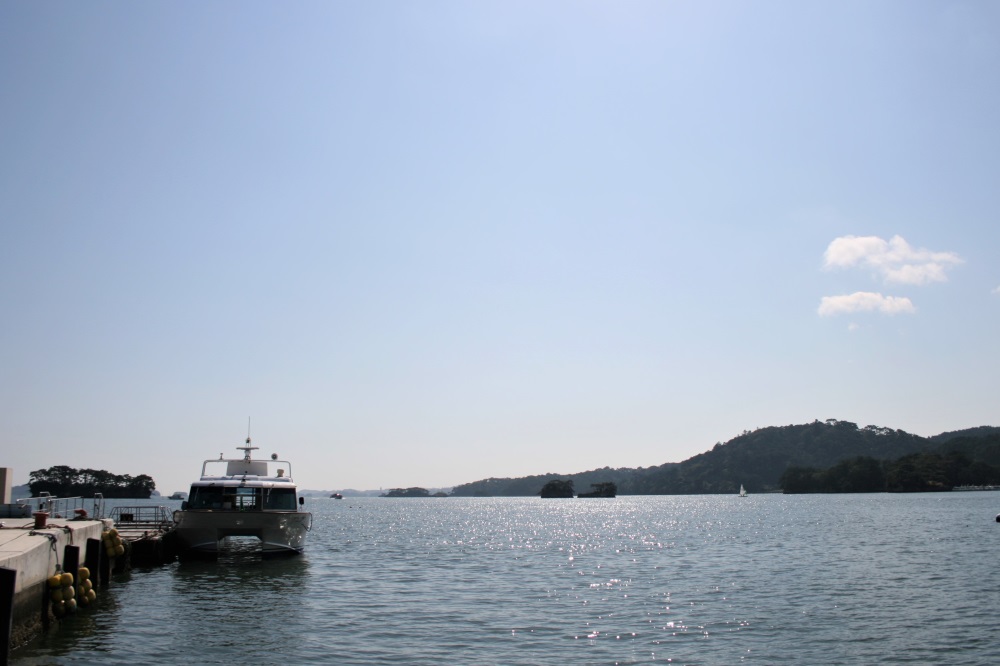
The day of our visit, the serene bay was full of people enjoying the warm sunshine, the sights, and the weird and wonderful Japanese snacks – wasabi, jellyfish or whitebait ice cream anyone?
We decided to take a boat trip around Matsushima Bay and its many islands to better appreciate its spectacular natural defences.
So we hopped on a relaxing cruise that lasted around three-quarters of an hour.
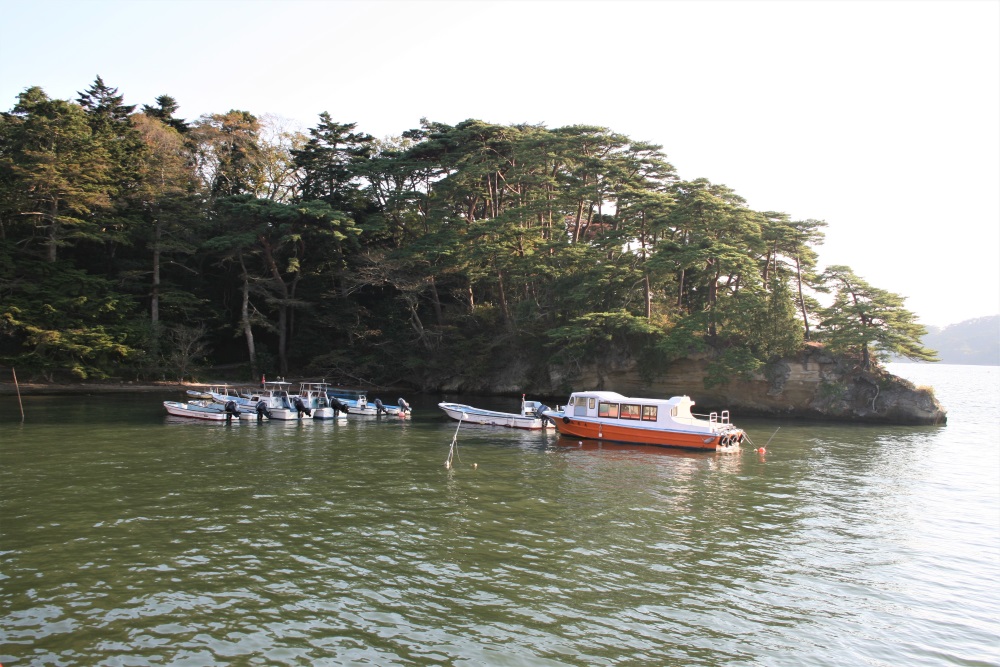
The oddly shaped, tree-topped islands were delightful and the bay very much deserves its scenic reputation, it’s a stunningly pretty part of the world.
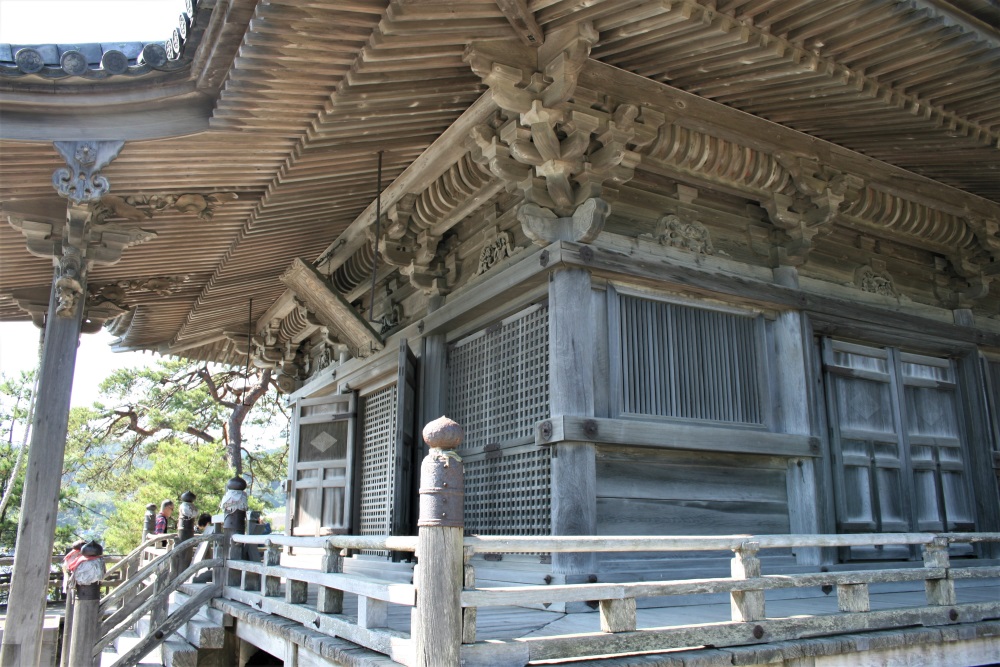
Following the boat ride, we headed to Godaido Temple (above), a small temple on a little island just off shore, accessible via little wooden bridges lined with small stalls selling souvenirs and kitsch toys.

The tiny island was teeming with tourists taking pictures of the ancient wooden temple, and having joined the hoards and snapped our own photos, we headed back to the mainland to visit Zuigan-ji temple.
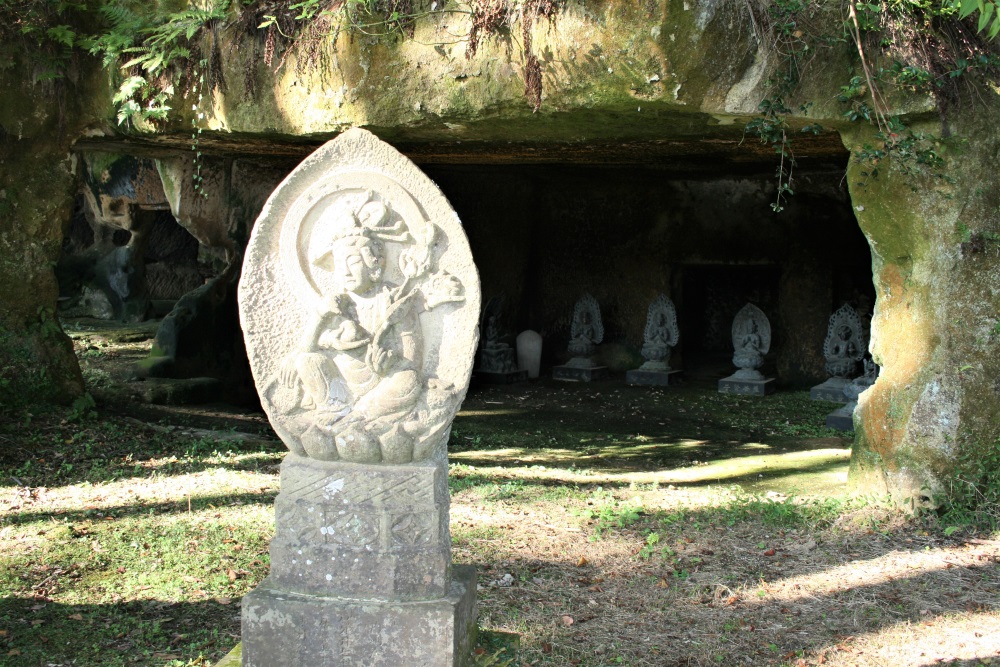
When we arrived, we found the temple was closed as it was undergoing an extensive, years-long renovation, but we could still walk around its tree-lined grounds and admire the sights.

Chief among these were the small caves underneath the cliffs that overlook the park, which were home to intriguing shrines and statues (above).

On leaving the temple, we passed a couple of small shops selling fresh oysters. I’d never tried oysters before, but that didn’t stop my brother-in-law promptly handing me a large, raw oyster.
“Swallow it whole,” came the order from my father.
It was alarmingly big and I couldn’t bring myself to swallow it, so I stood there, chewing for a good five minutes – much to my family’s amusement – before I got any of it down my throat.
It certainly wasn’t one of my most glamorous moments.
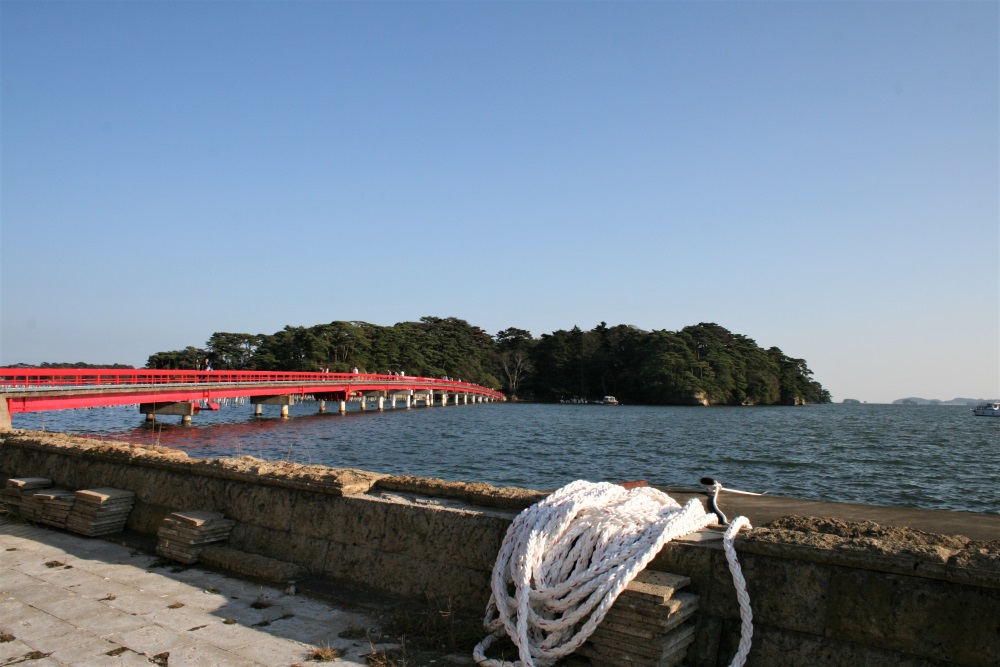
We finished our day with a trip to Fukuura Island, a largish island off the coast accessible by a long, red footbridge.
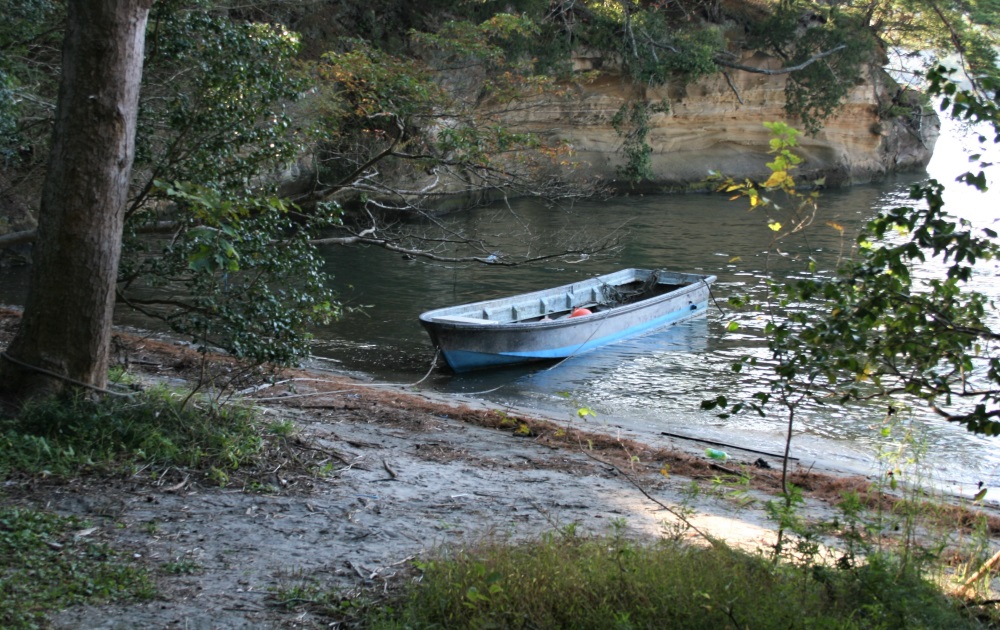
The island was full of picturesque coves and beaches, some of which we had to clamber down fairly precarious paths to get to. There was also a small wooden temple on the island.
It’s incredibly idyllic and was the perfect place to while away the rest of the afternoon.
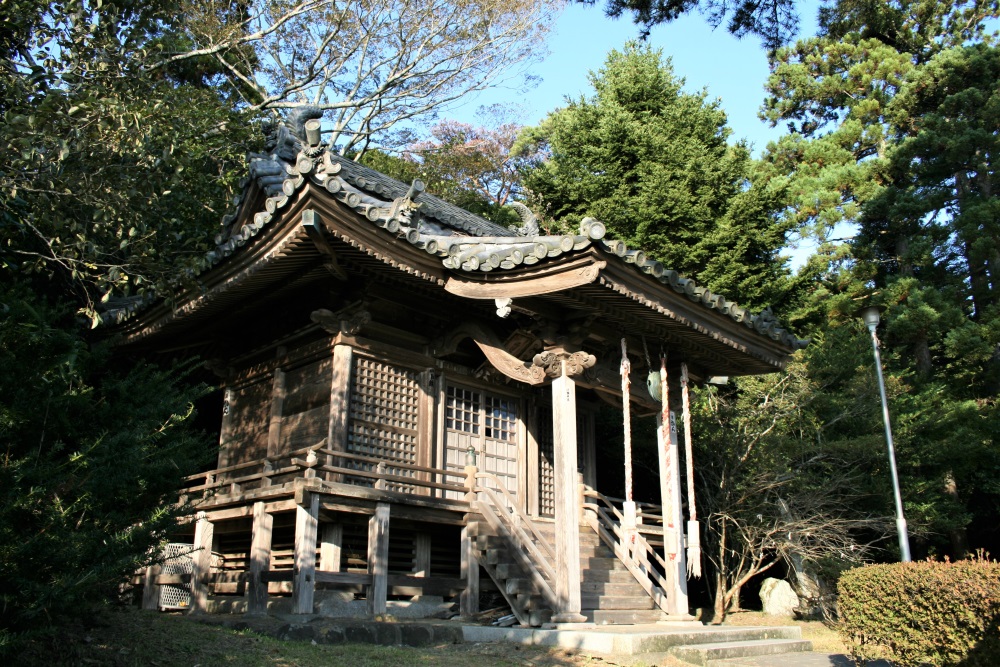
Matsushima is a world away from Japan’s frenetic big cities and made for a fantastic day trip from Sendai, where we were staying.
It’s easy to see why it’s revered as one of the three most scenic places in the country and I will definitely be looking to visit the other two nihon sankei on future trips to Japan.





